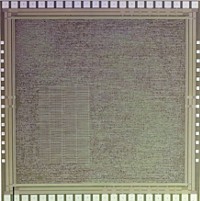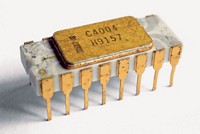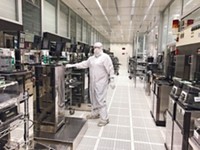Advertisement
Grab your lab coat. Let's get started
Welcome!
Welcome!
Create an account below to get 6 C&EN articles per month, receive newsletters and more - all free.
It seems this is your first time logging in online. Please enter the following information to continue.
As an ACS member you automatically get access to this site. All we need is few more details to create your reading experience.
Not you? Sign in with a different account.
Not you? Sign in with a different account.
ERROR 1
ERROR 1
ERROR 2
ERROR 2
ERROR 2
ERROR 2
ERROR 2
Password and Confirm password must match.
If you have an ACS member number, please enter it here so we can link this account to your membership. (optional)
ERROR 2
ACS values your privacy. By submitting your information, you are gaining access to C&EN and subscribing to our weekly newsletter. We use the information you provide to make your reading experience better, and we will never sell your data to third party members.
Materials
Saluting the Guru of Semiconductors
The Perkin Medal goes to Gordon Moore, who as a youngster, was captivated by chemistry
by ELIZABETH K. WILSON, C&EN WEST COAST NEWS BUREAU
September 13, 2004
| A version of this story appeared in
Volume 82, Issue 37

Gordon E. Moore never intended for his offhand prediction 40 yearsago to become an industrial mantra. His so-called Moore's law,which originally held that the number of transistors that can bepacked onto a single chip will double every year, was a simplerule of thumb merely to illustrate how technology can grow exponentially.
But remarkably, since 1965, when Moore first postulated theidea in an article in Electronics magazine, Moore's law has becomea yardstick for the microprocessor industry, which sets its goalsbased on achieving that standard. Although Moore revised the lawin 1975 to a doubling every two years, it has become a self-fulfillingprophecy, where "industry realizes it has to go that fast or fallbehind," he says.
Moore's legacy involves much more than a catchy formula, however.He's one of the fathers of the semiconductor industry itself,a chemist who cofounded the Silicon Valley company FairchildSemiconductor in 1957 and then Intelin 1968.
He and his colleagues pioneered the development of integratedcircuit technology at Fairchild, as well as the first microprocessorat Intel, where Moore is now chairman emeritus. The rest is history.Intel's computer chips now drive 80% of the world's computers,and semiconductor technology is the foundation for much of whatwe hold essential in modern life.
For these weighty contributions, Moore was selected by theAmerica Section of London-based Societyof Chemical Industry to receive the Perkin Medal, one of thechemical industry's highest honors. The Perkin Medal was establishedin 1906 to honor Sir William Henry Perkin (1838­ 1907), achemist who discovered the first synthetic aniline dye at age18. Medal recipients have included Elsa Reichmanis of LucentTechnology's Bell Laboratories (2001) and Glenn T. Seaborgof the University of California,Berkeley (1957).
"I am really quite honored to get it," Moore says.
Moore is a lifelong Californian. He was born in 1929 in SanFrancisco and grew up in the San Francisco Bay Area towns of Pescaderoand Redwood City. Chemistry captivated him early on when a neighborgot a chemistry set. "In those days, you could do fun things,and I got interested in explosives," he says. "I did quite a bitof stuff--I used to make small quantities of nitroglycerin anddynamite."
He left the chemistry set at home when he went off to college,first to San Jose State University,then to UC Berkeley, wherehe earned a bachelor's degree in chemistry in 1950. During thistime, Moore also married his wife, Betty. He then went to CaliforniaInstitute of Technology and received a Ph.D. in chemistryand physics in 1954.
After a short stint doing basic research at JohnsHopkins University's Applied Physics Laboratory, Moore yearnedto do something with an applied bent. So he returned to NorthernCalifornia to work with William B. Shockley, Nobel Prize-winninginventor of the transistor. Shockley had left his job at BellLabs to head the Shockley Semiconductor Laboratory of BeckmanInstruments in Mountain View, Calif. There, Moore was partof a group of scientists developing applications for transistors.
But things didn't go well at the Shockley lab. Employees becameincreasingly unhappy with their perception of Shockley's difficultmanagement style, which included threats of polygraph tests forthe entire lab.
EIGHT SCIENTISTS, including Moore, eventuallydecided to split off and form their own company, prompting Shockleyto dub them the "traitorous eight." The group found a backer inSherman M. Fairchild, founder of Fairchild Camera & Instrument,and in 1957 FairchildSemiconductor was born.
At the new company, Moore headed the research team, and heand his colleagues began to formulate devices that combined severaltransistors on one silicon chip. Fairchild's technology was knownas the planar process, which involved building insulating layerson the surface of a silicon chip, making it possible to separatethe transistors from each other.
The semiconductor company TexasInstruments had also invented integrated circuits, but Fairchildoffered the first commercial integrated circuit in 1961. The developmentof integrated circuits marked a key point in the evolution ofsemiconductor electronics, leaving the limitations of bulky vacuumtube technology in the dust.
But management troubles dogged Moore and his colleagues atFairchild, too, and so Moore and his longtime collaborator andboss, Robert N. Noyce, left to found Intel in 1968. There, theytook the idea of integrated circuits even further.
A Japanese start-up approached Intel, looking for help in buildinga family of calculators. "They came to Intel with some 13 verycomplex circuits they wanted us to make," Moore says. "We werejust a little company--we could no more do 13 complex designsthan fly." So they convinced the customer to abandon the originaldesign and create a device that combined all the circuits on onechip--the first microprocessor, known as the 4004.
GET AN AWARD, GIVE AN AWARD
Perkin Recipient Moore To Bestow First Gordon Moore Award

SOCIETY OF CHEMICAL INDUSTRY PHOTO
It's not often that someone gets a prestigious award andhas an award named for him or her at the same time. On Sept.14, Gordon Moore, recipient of this year's Perkin Medal,will be presenting the Society of Chemical Industry's firstGordon Moore Award to George Barclay, R&D manager formaterials innovation at Rohmand Haas, at the Chemical Heritage Foundation. The newaward is given to a young scientist who has made a significantcontribution to the chemical industry.Barclay's claim to fame is a new class of terpolymersused to make deep-ultraviolet photoresists. These polymers,which can be used to make much smaller integrated circuits,are synthesized through free-radical copolymerization ofp-hydroxystyrene, styrene, and tert-butyl acrylate. Theymake up more than 40% of the deep-UV photoresist market,which is worth about $300 million.
INTEL BLOSSOMED,and in 1981, IBM chose Intel's 8088 microprocessor for its new personal computers.True to Moore's law, the chips have grown in complexity, fromthe Pentiums of the 1990s, with their millions of transistors,to the new Itanium series, with their hundreds of millions oftransistors. The next generation of microprocessors will have1.7 billion transistors on a single chip.
Intel's revenues in 2003 were $30.1 billion with net incomeof $5.6 billion, having spent $4.4 billion on R&D. "It wasjust never imagined that there was that much growth possibilityin the industry," Moore says.
Back in the semiconductor industry's early years, Moore's chemistrybackground was an ideal fit. "I got into it when neither the physicsnor the processing of the devices was understood," Moore explains."In those days, the industry hired mostly scientists."
Even though engineers now dominate the industry, he notes,semiconductor technology is rooted in chemistry. Electronic devicesare produced with chemical processes such as lithography. Andthe needs of the semiconductor industry have driven the productionof many bulk chemicals to levels of purity that perhaps were oncethought to be unattainable. "It really is a chemical industry,"Moore says.
Semiconductors, though, can only be made so small. As componentsshrink to sizes on the scale of atoms, they run up against quantummechanics. "The fact that materials are made of atoms is a barrierwe can't get beyond," Moore says. In fact, he adds, chip designersare already encountering some effects, such as tunneling, thatthey can use to their advantage. Researchers are working withdifferent materials with higher dielectric constants that willallow them to continue reducing the size of devices--for a while,at least.
"I often get asked what's going to replace semiconductor technology,"Moore says. "My guess is probably nothing." Semiconductor technologyhas permeated many fields besides electronics, most notably inapplications such as gene chips and microfluidic devices. "I'minclined to think," he says, "that the technology is a fairlyfundamental one and will be around for a long time."
Throughout his illustrious career, Moore has garnered accolades.In 1990, he received the NationalMedal of Technology from President George H. W. Bush. Hisother awards include the Chemical Heritage Foundation's OthmerGold Medal in 2001. He is a fellow of the Instituteof Electrical & Electronics Engineers, a member of theNational Academy of Engineering,and a member of the board of trustees of Caltech.
Nowadays, Moore keeps his hand in Intel as chairman emeritus;he retired from the board of directors in 2001. He's also a directorof Gilead Sciences. But he'sgot plenty of other projects to keep him busy as well.
An avid fisherman, Moore will catch "anything from tiny troutto giant marlin," he says. "If it swims, I'll fish for it."
In 2000, Moore and his wife set up the Gordon E. & BettyI. Moore Foundation to fund scientific, environmental, and educationalprograms. Since then, the foundation has awarded more than $700million in grants.
Moore and his wife have also been involved for about a dozenyears with ConservationInternational, a nonprofit that works to preserve Earth'sresources. "It seems to be an opportunity to save some of thethings that have made the Earth an interesting place," he says.





Join the conversation
Contact the reporter
Submit a Letter to the Editor for publication
Engage with us on Twitter